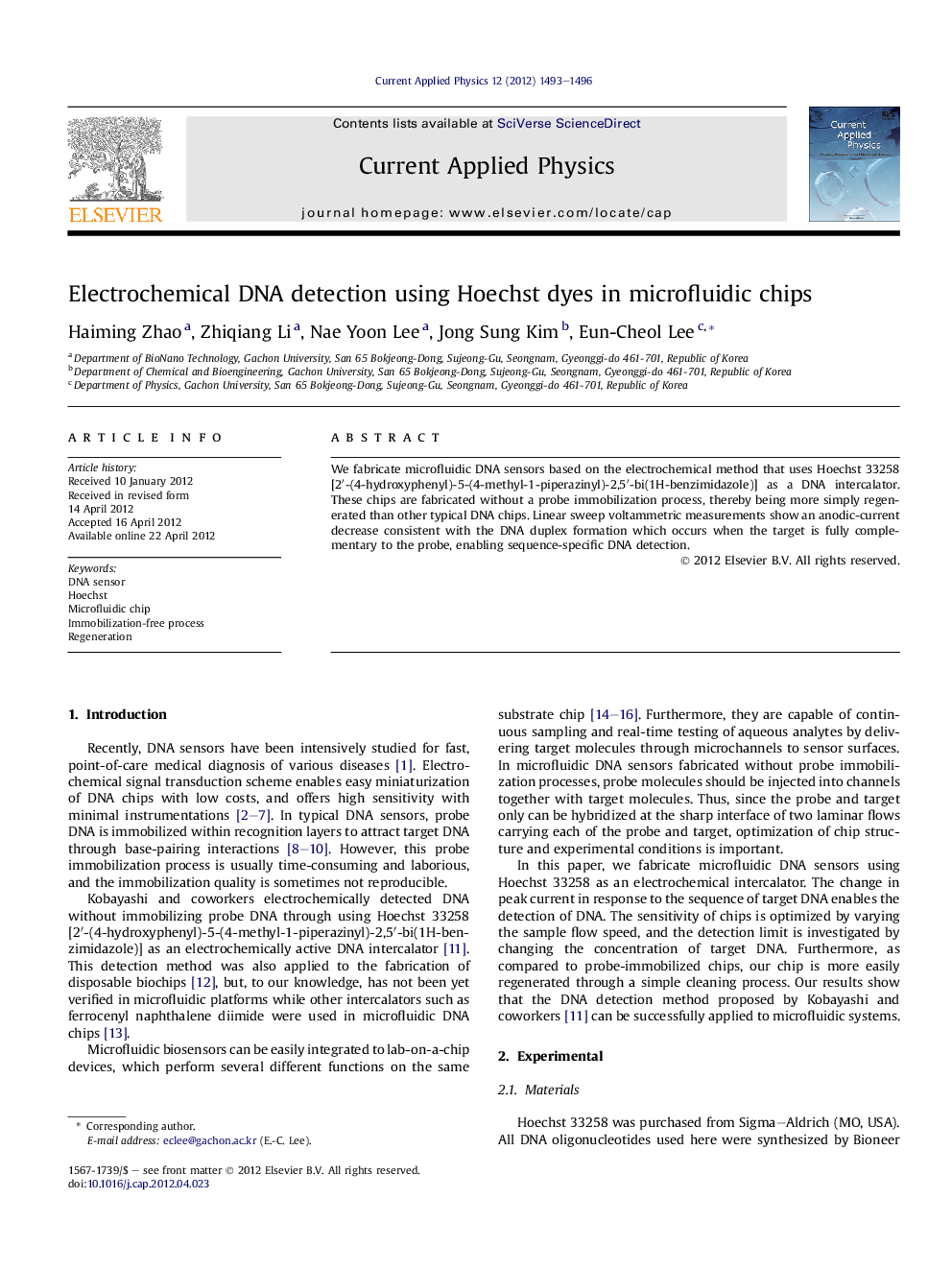| Article ID | Journal | Published Year | Pages | File Type |
|---|---|---|---|---|
| 1787891 | Current Applied Physics | 2012 | 4 Pages |
We fabricate microfluidic DNA sensors based on the electrochemical method that uses Hoechst 33258 [2′-(4-hydroxyphenyl)-5-(4-methyl-1-piperazinyl)-2,5′-bi(1H-benzimidazole)] as a DNA intercalator. These chips are fabricated without a probe immobilization process, thereby being more simply regenerated than other typical DNA chips. Linear sweep voltammetric measurements show an anodic-current decrease consistent with the DNA duplex formation which occurs when the target is fully complementary to the probe, enabling sequence-specific DNA detection.
► Immobilization-free DNA sensors are fabricated in microfluidic platforms. ► Hoechst 33258 is used as an electrochemical DNA intercalator. ► The anodic current is lowest when the target DNA is complementary to the probe. ► These chips are more easily regenerated than other typical DNA chips.
